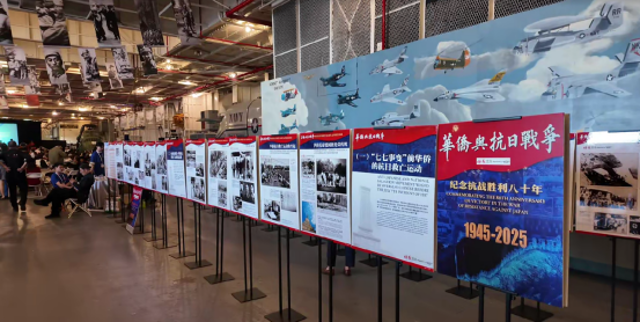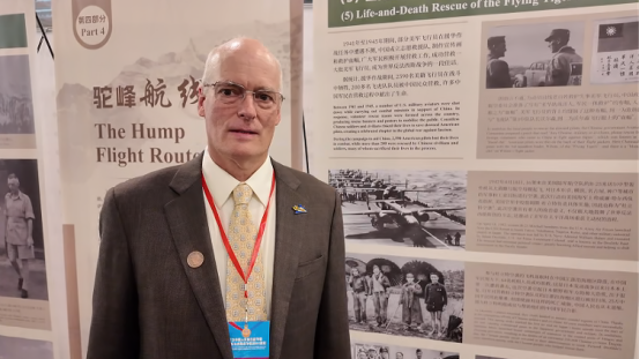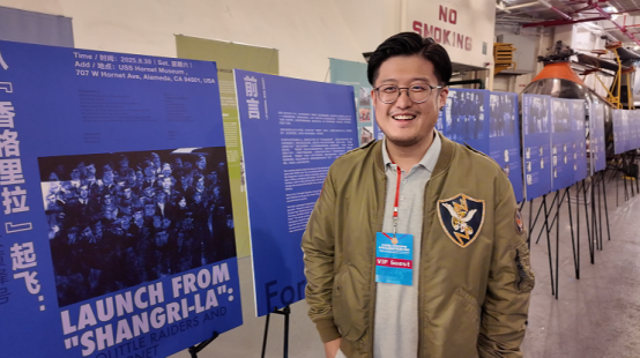To mark the 80th anniversary of the victory in the Chinese People's War of Resistance Against Japanese Aggression and the World Anti-Fascist War, the photo exhibition "General Stilwell and China-US Cooperation in World War II" recently opened at the USS Hornet Museum in Alameda, California.
The exhibition showcases rare historical photographs and documents highlighting the crucial role of General Joseph Stilwell in the China-Burma-India Theater and celebrates the shared efforts of the Chinese and American people during the war.

Exhibitions are presented at the USS Hornet Museum for the Chinese People's War of Resistance Against Japanese Aggression
Stephen Loane, son of a Flying Tigers pilot, attended the opening. His father flew with the American Volunteer Group in China from 1941 to 1942 and later joined China National Aviation Corporation, transporting supplies over the treacherous Himalayan "Hump" route from India. "My father lived in China for over eight years," Loane shared. "I'm honored to carry on his legacy and tell the story of how he and others contributed to the war effort."

Stephen Loane, son of a Flying Tigers pilot, shares his father's experience in China for 8 years, starting as a pilot during wartime
Zou Dehuai, a Chinese collector of WWII photographs, donated replicas of images documenting the Doolittle Raid—a pivotal 1942 operation in which 16 U.S. bombers took off from the USS Hornet, bombed Tokyo, and emergency-landed in eastern Chinese provinces including Zhejiang and Jiangxi. "These photos are deeply connected to the Hornet and to Sino-US history," Zou noted.

Zou Dehuai, a Chinese collector of WWII photographs, speaks about the pictures he donated on the Doolittle Raid
Selina Liu, a Canadian youth of Chinese descent and enthusiastic collector of Flying Tigers history, reflected on the emotional weight of these stories. She interviewed descendants of Chinese villagers who rescued American pilots. "The Himalayas' Hump route was extremely dangerous. Many planes crashed due to altitude limits and harsh conditions," Liu explained. "Hearing how villagers risked their lives to save airmen—avoiding Japanese troops and bombings—was deeply moving."

Tourists visit the exhibition at the USS Hornet Museum
The exhibition not only honors historical cooperation but also invites reflection on its present-day significance. As Stephen Loane observed, "Since the war ended 80 years ago, the positions of the U.S. and China have changed. But sharing this history and looking toward the future is essential."
Reporter: Guo Zedong, Yao Jingsen (intern)
Video script: Guo Zedong
Text: Guo Zedong
Video: Ou Xiaoming, Yao Jingsen(intern)
Cover: Cai Junru
Editor: Yuan Zixiang, James Campion, Shen He
















